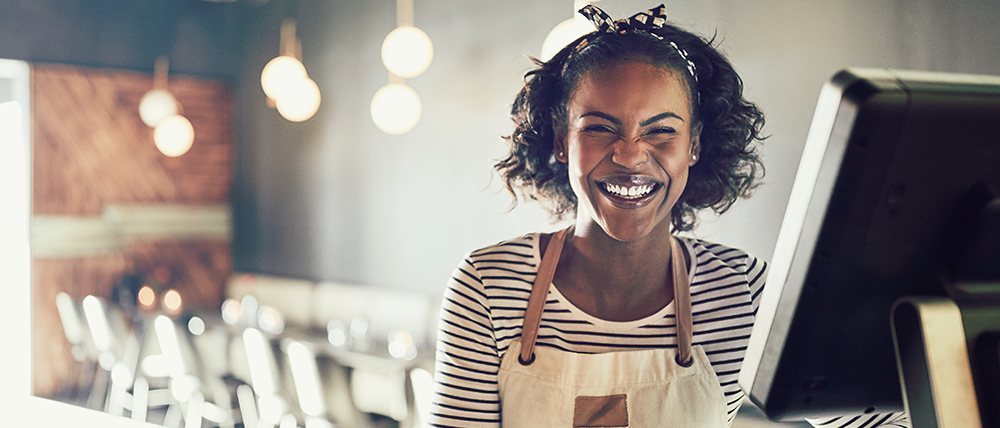
Restaurant owners often wonder whether the added revenue from third-party delivery apps such as Grubhub, DoorDash, and Uber Eats is worth the added expense and hassle. From mismanaged workflows to overpayment of sales tax, these apps can cause more pain than profit. To maximize profit and minimize pain, check out these tips for managing your third-party delivery apps.
Best practices for managing third-party delivery apps
Managing sales tax for third-party delivery apps is complex because each app creates a new revenue stream and operational process for your POS system. The best practice and most efficient way to manage these apps is to run all orders through the POS. This type of set-up allows the POS system to become the official record of all sales — both those made directly in the restaurant and those from 3rd party apps. Running orders through the POS also helps create maximum efficiency by streamlining workflows to the kitchen for better customer fulfillment on the front end.
If the POS is not set-up correctly for 3rd party delivery apps, revenue may be recorded multiple times. Start by entering 3rd party orders coming to the restaurant directly into the POS as received. The instructions below show how to set-up the POS to avoid this happening.
Know who is responsible for collecting and remitting sales tax from 3rd party orders
One of the most confusing aspects of setting up a third-party delivery app is understanding who is responsible for calculating, collecting and paying sales tax. To make things even more complex, states are changing laws around who is responsible for collecting and remitting sales tax for third-party app orders.
Until recently sales tax was collected by third-party deliver apps and remitted to restaurants to file and pay to the state. The exception was a handful of states that required third-party delivery services to remit their own sales tax. But a recent Supreme Court ruling around e-commerce sales has resulted in many states changing the laws that now require these services to collect and remit sales tax. This means restaurants in those states are no longer responsible for paying sales tax on third-party delivery app sales.
Review your contract with each third-party delivery service to see exactly who is responsible for filing and remitting sales tax. You can also review our state-by-state chart to view who is responsible for each of the major, national delivery apps. In many states, the delivery service is now responsible for collecting and remitting sales tax on their sales. If you do not program your POS correctly, you may end up double-paying sales tax on these orders. Additionally, many 3POAs do not pay local sales taxes, which means you may be responsible for filing and paying them.
Make sure your POS is set up correctly to avoid double collecting (and paying) sales tax
Once you have determined who is responsible for remitting sales tax in your state, it’s simply a matter of setting up your POS correctly. Here are two simple ways to set-up the POS to manage third-party delivery apps, first for states & services where you remit the sales tax third party apps collect. And second for states & services where the apps are now required to collect and remit sales tax. The only difference will be step 2 of the setup process.
POS SETUP FOR THIRD-PARTY DELIVERY APPS WHEN SALES TAX IS REMITTED TO YOU
- Create an ORDER TYPE named for each 3rd party app – (Typical order types are“Dine In” or “To-Go”)
- Assign the new ORDER TYPE the correct tax rate(s) for your tax jurisdiction.
- Create a TENDER TYPE named for each corresponding 3rd party app – (Typical tender types are Cash or Check or Credit/Debit”)
POS SETUP FOR THIRD-PARTY DELIVERY APPS WHERE THEY ARE REQUIRED TO REMIT SALES TAX
- Create an ORDER TYPE named for each 3rd party app – (Typical order types are“Dine In” or “To-Go”)
- Assign the new ORDER TYPE a 0% tax rate for your tax jurisdiction.
- Create a TENDER TYPE named for each corresponding 3rd party app – (Typical tender types are Cash or Check or Credit/Debit”)
ENTERING ORDERS
Enter orders for 3rd party apps into your POS as they are received using the appropriate ORDER TYPE. When the order is complete, close it under the corresponding TENDER TYPE.
Entering orders this way creates an efficient workflow to the kitchen and customer while also streamlining the back office work. Sales are recorded in the POS either including sales tax where you pay the tax or as non-taxable, 0% sales tax where the 3rd party app is remitting the sales tax. This best practice will streamline back-office work and sales tax management as well as provide clean books and records for accounting or in the event of a sales tax audit.
Read our blog post on a comprehensive guide on what to consider when setting up a third-party delivery app and more details on POS setups.
